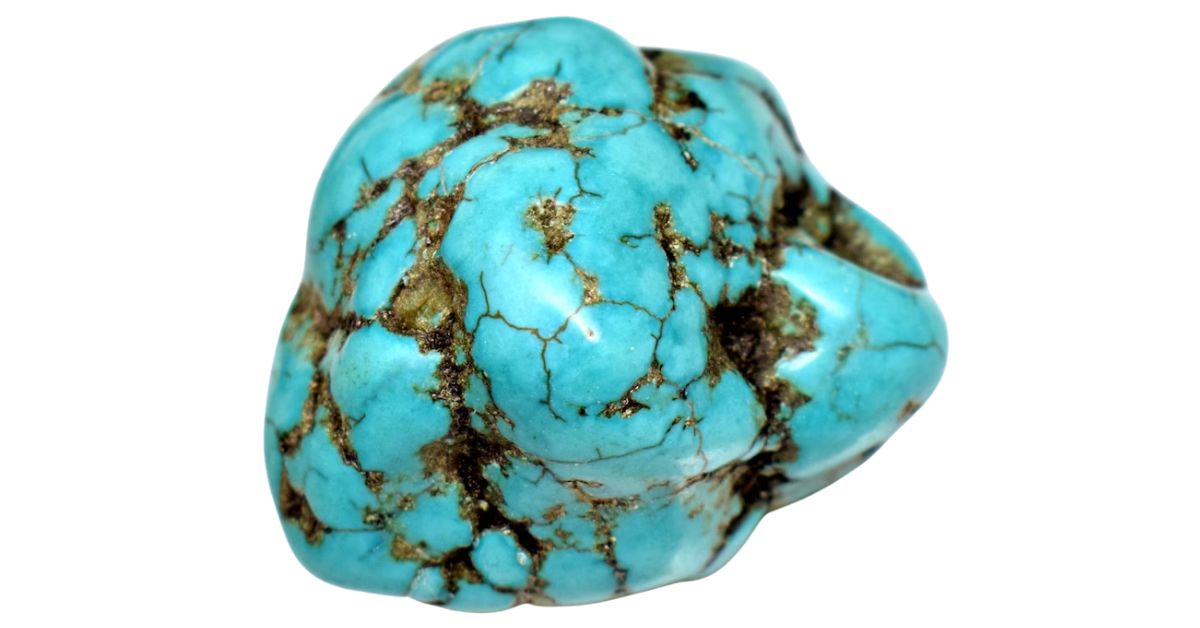There are different types of rocks found in New Mexico, and each one is a great find for anyone who’s interested in geology. Among these, turquoise, red beryl, and fire opal stand out as some of the most sought-after finds.
Each of these minerals has its own set of characteristics that make them valuable to collectors and enthusiasts alike. With the right information and a keen eye, anyone can start their own collection of New Mexico’s natural wonders.
A List of The Common Rocks, Stones, and Minerals Found in New Mexico
Exploring New Mexico can reveal the state’s natural history and the fascinating stories told through rocks and minerals. You find more information about what you can find in the state with the help of our guides:
The New Mexico State Rock, Mineral, and Gem
Different US states have different symbols that represent it, and several states have a designated state gem.
| New Mexico State Gem | Turquoise |
Rockhounding in New Mexico is an exciting adventure, but knowing the rules is key to a successful search.
The New Mexico Energy, Minerals and Natural Resources Department (EMNRD) offers valuable tips and guidelines for collectors to follow.
Amethyst
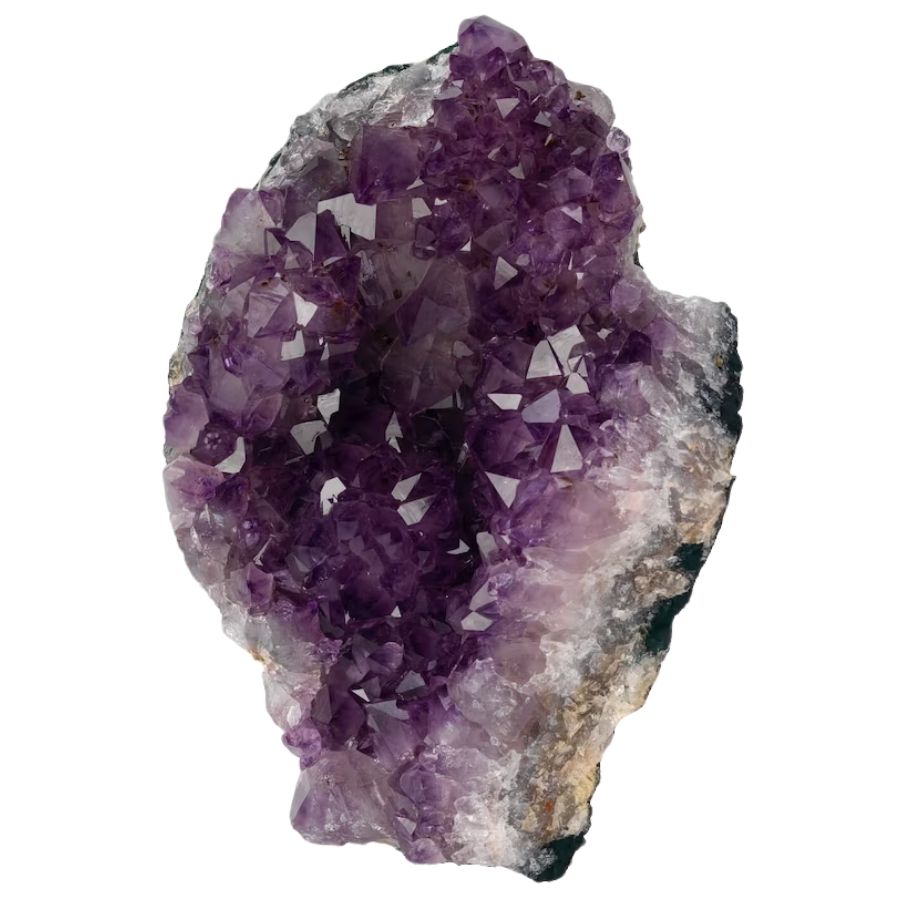
Amethyst is a type of quartz that comes in shades of purple, from light lavender to deep violet. It’s formed when silica-rich liquids fill gaps in rocks, cooling and crystallizing over time.
The color of amethyst is due to traces of iron and other minerals, varying depending on the location it’s found. These beautiful crystals often grow inside hollow rocks, creating geodes that can be quite large and impressive.
Amethyst has several interesting characteristics, such as its ability to fade in sunlight and its use in jewelry.
Where you can find amethyst in New Mexico
- Mogollon Mountains
- Big Burro Mountains
- Grant County
Azurite
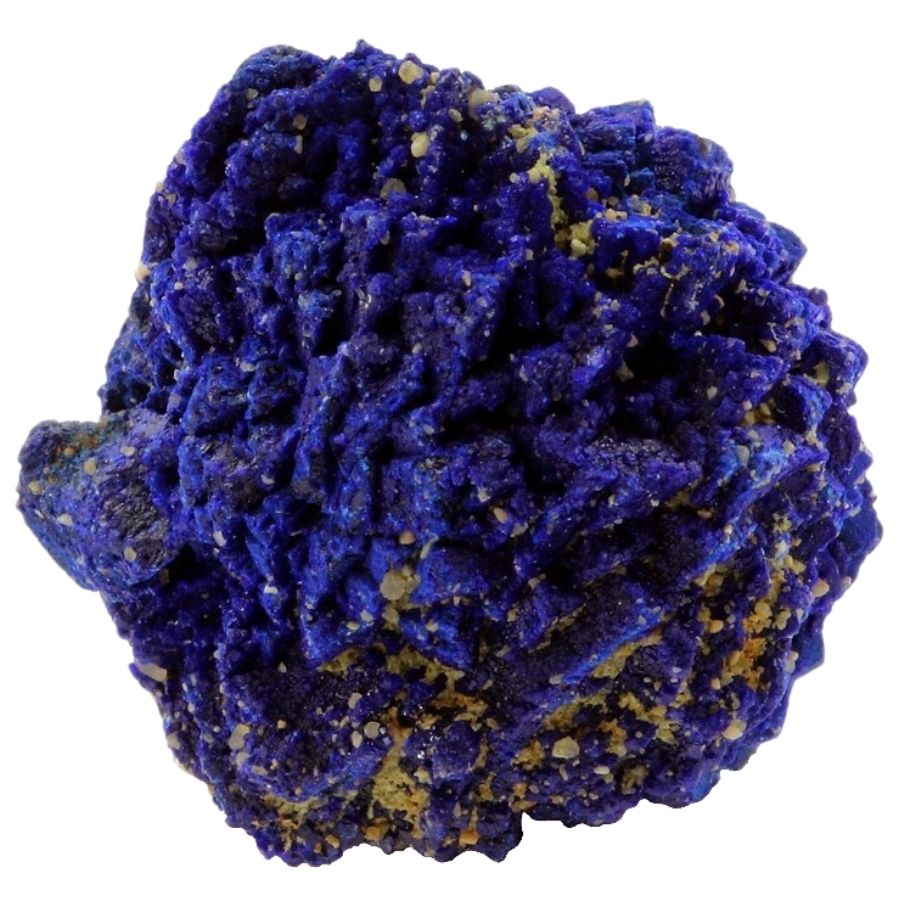
Azurite is a deep blue mineral that gets its vibrant color from copper. When copper ore reacts with carbonated water and oxygen, azurite is one of the minerals that can develop.
This mineral is known for its bright blue hue and can often be found in association with green malachite, which adds to its visual appeal. Azurite crystals are usually found in the shape of prismatic crystals or as masses of nodules.
In the past, azurite was ground up and used as a pigment in paints and fabric dyes because of its striking color. Today, it’s mainly collected by mineral enthusiasts and occasionally used in jewelry.
Where you can find azurite in New Mexico
- Socorro County
- Black Range
- Gallinas Mountains
- San Pablo
Galena
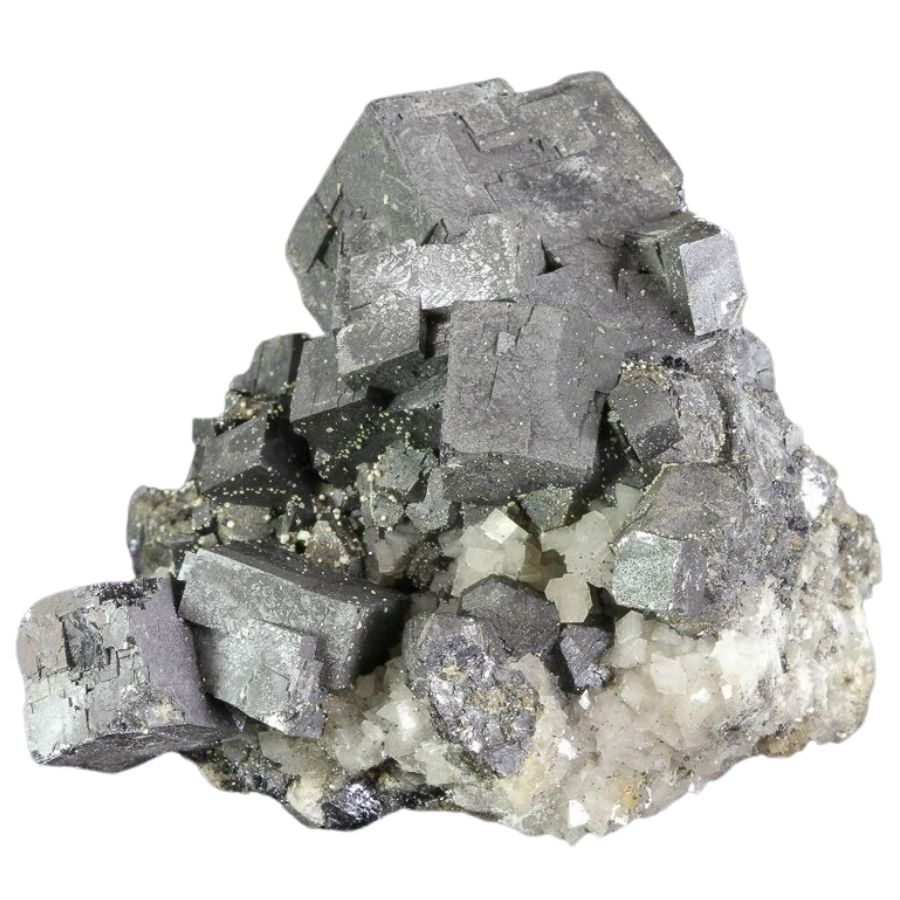
Galena is a shiny, gray mineral that is the main source of lead. It often appears as cubic crystals or as part of larger rock formations. This mineral has a very high density, which makes it feel heavier than other rocks of the same size.
Galena’s shiny surface and cubic shape are easy to recognize, making it interesting to collectors and scientists.
People have mined galena for thousands of years because it’s a major source of lead, which is used in batteries, protective shields against radiation, and in the construction of some types of buildings.
Besides lead, galena can also contain silver, making some deposits valuable for the extraction of this precious metal.
Where you can find galena in New Mexico
- Doña Ana County
- Big Burro Mountains
- Peloncillo Mountains
- Nose Rock
Hemimorphite
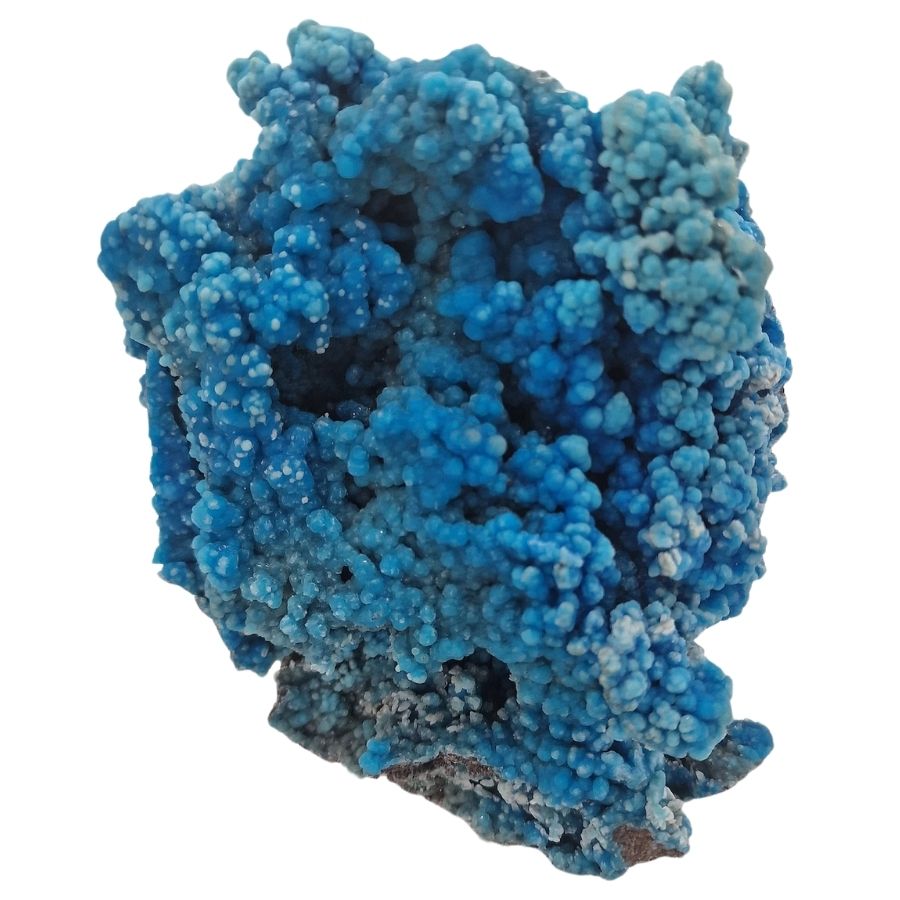
Hemimorphite is a mineral that can be found in a variety of colors, from clear to shades of blue and green. It forms as a secondary mineral in the oxidation zones of zinc ore deposits, where zinc and other elements react with oxygen and water.
Hemimorphite has an interesting feature: its crystals have different shapes at each end, which is rare among minerals. This gives it the name “hemimorphite,” meaning “half shape” in Greek.
While not as well-known as some minerals, hemimorphite is valued both as a source of zinc and for its beauty. It’s used in jewelry and as a collector’s mineral because of its attractive appearance and color.
Where you can find hemimorphite in New Mexico
- Pyramid Mountains
- Hillsboro
- Bingham
Scheelite
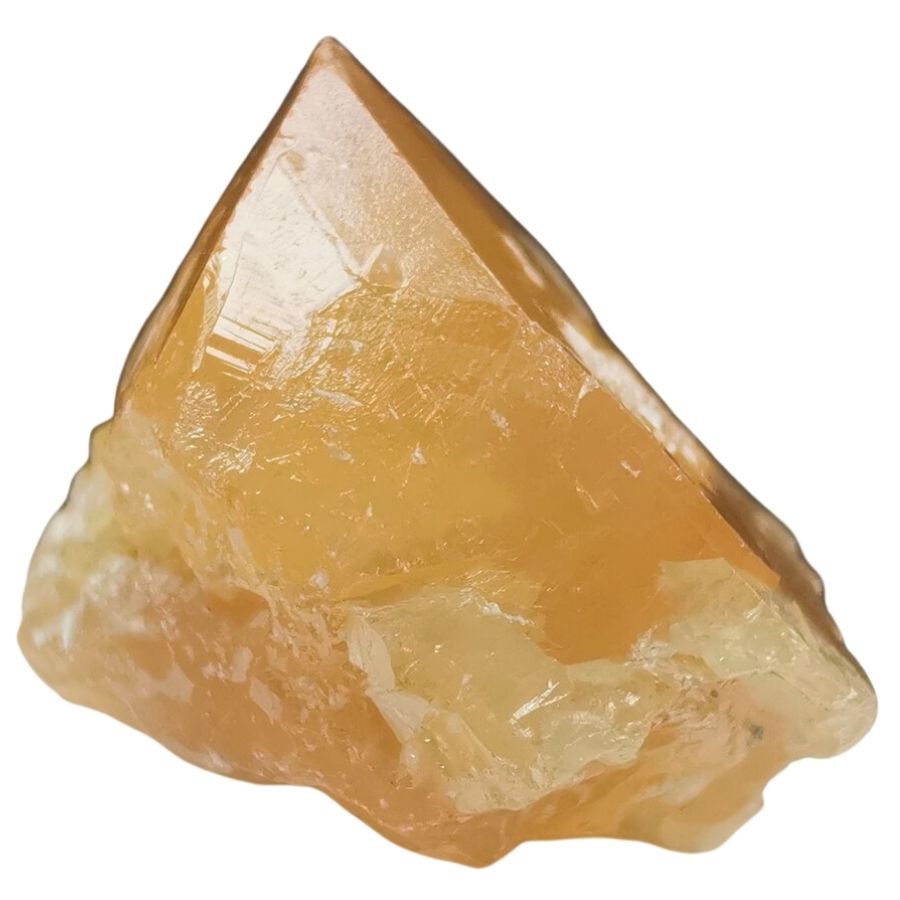
Scheelite is a valuable mineral that contains tungsten, important for making things like light bulb filaments and steel. It forms in high-temperature veins in the earth, where hot, mineral-rich fluids cool down and crystallize.
Scheelite glows under ultraviolet light, showing bright blue or yellow colors, which makes it easy to spot at night. This interesting characteristic is helpful for miners and collectors when searching for it.
Among the various rocks and minerals found in New Mexico, scheelite is sought after for its use in industry. It’s mined for the tungsten it contains, which is used in making tools, machinery, and electronics.
Where you can find scheelite in New Mexico
- Grant County
- Sangre de Cristo Mountains
- Victorio Mountains
Turquoise
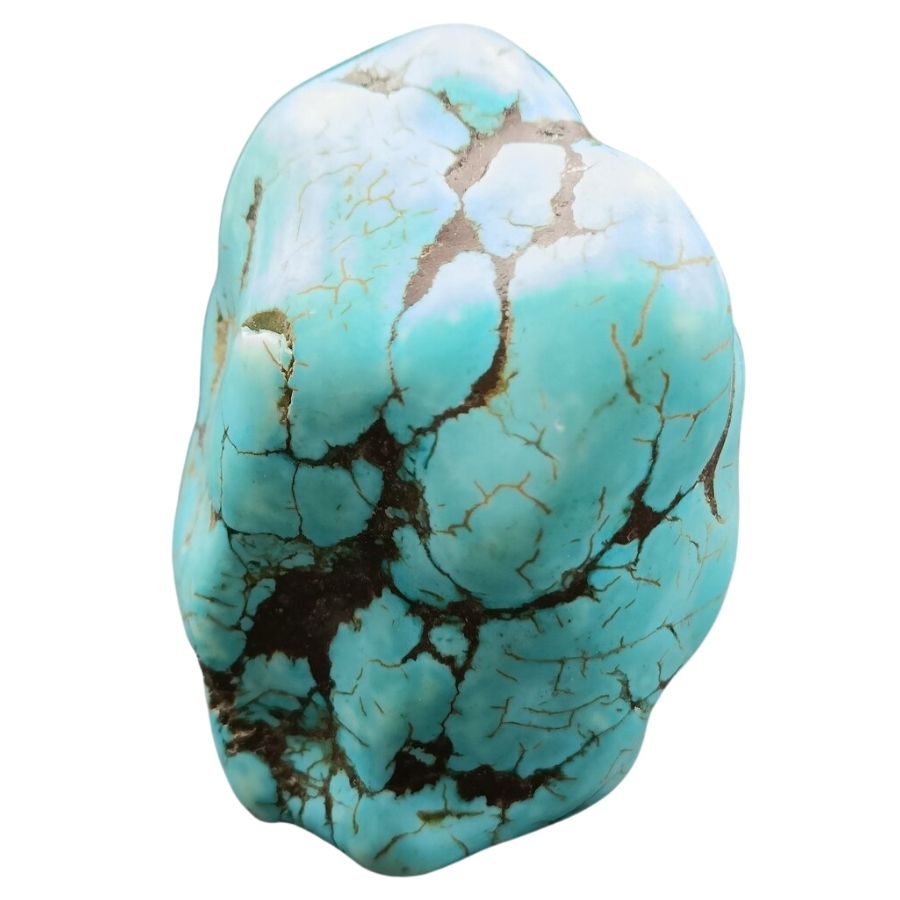
Turquoise is a blue to green mineral that is highly valued for its beautiful color and has been used in jewelry and decoration for thousands of years.
This mineral develops in dry climates where copper-rich groundwater seeps through rocks, reacting with minerals that contain phosphorus and aluminum.
The distinct color of turquoise can range from sky blue to green depending on the amounts of iron and copper within it. Veins or patches of other minerals within turquoise can create intricate patterns that add to its appeal.
People use turquoise in jewelry and decorative items because of its eye-catching color and the smooth way it can be polished. Additionally, it is sometimes ground into powder and used in traditional art and paintings for its bright color.
Where you can find turquoise in New Mexico
- Doña Ana County
- Peloncillo Mountains
- Jarilla Mountains
Wulfenite
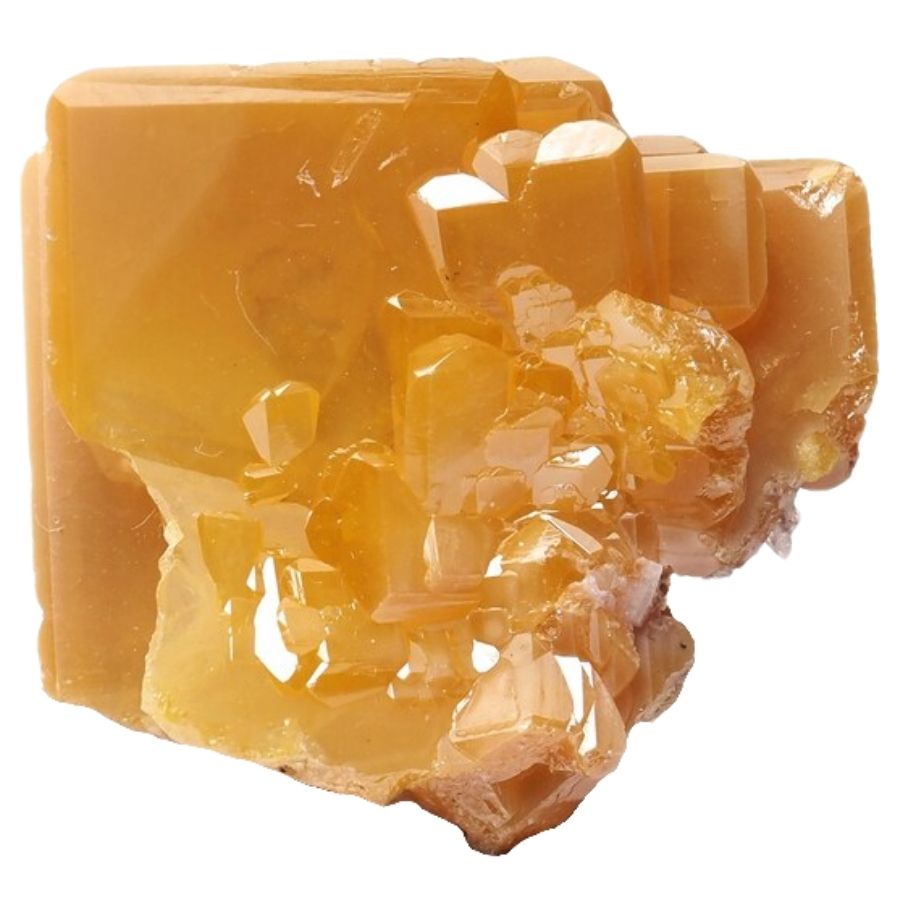
Wulfenite is a bright orange to yellow mineral that forms in the oxidation zones of lead ore deposits. It happens when lead combines with oxygen and molybdenum in the presence of water.
Wulfenite crystals are usually thin and tabular, making them stand out because of their shape and color. They can also be quite shiny, catching the eye of anyone who sees them.
This mineral is not just for looking at; it’s also used to extract molybdenum, an element important for strengthening steel.
Besides its industrial use, wulfenite is collected by mineral enthusiasts who admire its unique appearance and color.
Where you can find wulfenite in New Mexico
- Organ Mountains
- Pyramid Mountains
- Luna County
The Gemstones Found in New Mexico
New Mexico offers a colorful palette of gemstones hidden beneath its vast, rugged terrains. Learn more about them in the guides below:
Chalcedony
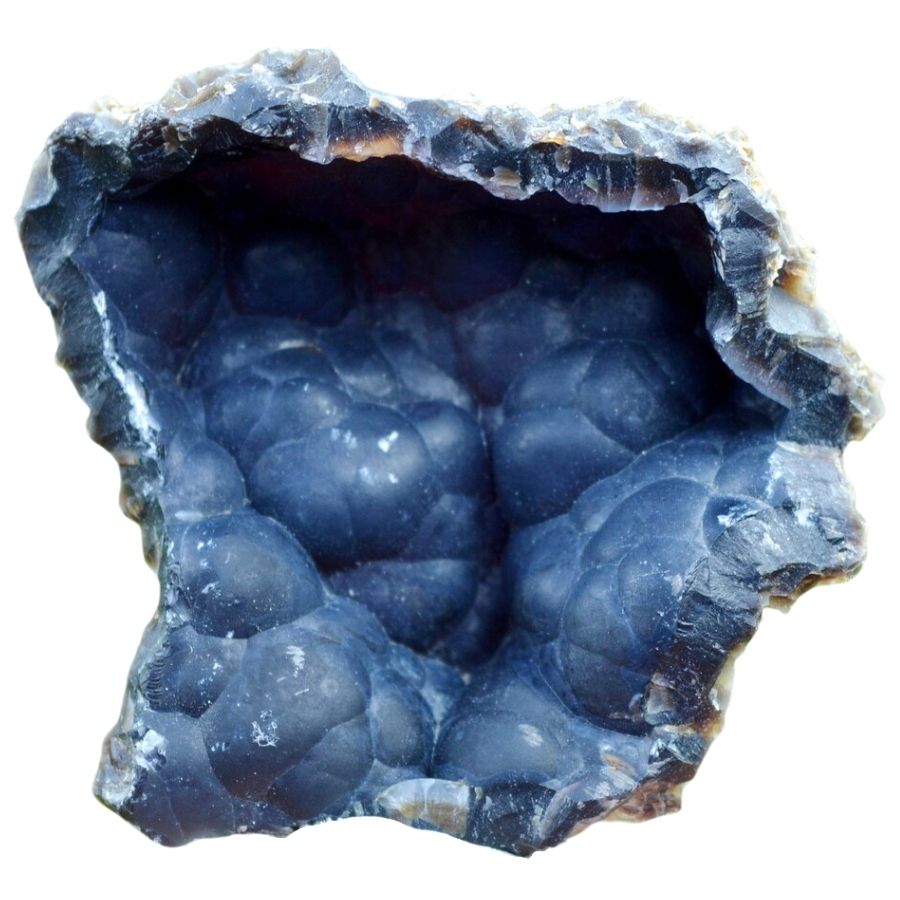
Chalcedony is a type of quartz that comes in many colors and forms. It is created when silica-rich water deposits layers of microscopic quartz crystals in gaps or cracks within rocks.
Chalcedony has a waxy luster and can be translucent or semi-transparent, giving it a soft, glowing appearance. This mineral is often found in a variety of shapes and sizes, making each piece special.
People use chalcedony to make jewelry and decorative items because of its beautiful colors and durability.
Where you can find chalcedony in New Mexico
- Albuquerque
- Mogollon Mountains
- Cuchillo
- Socorro County
Fire Agate
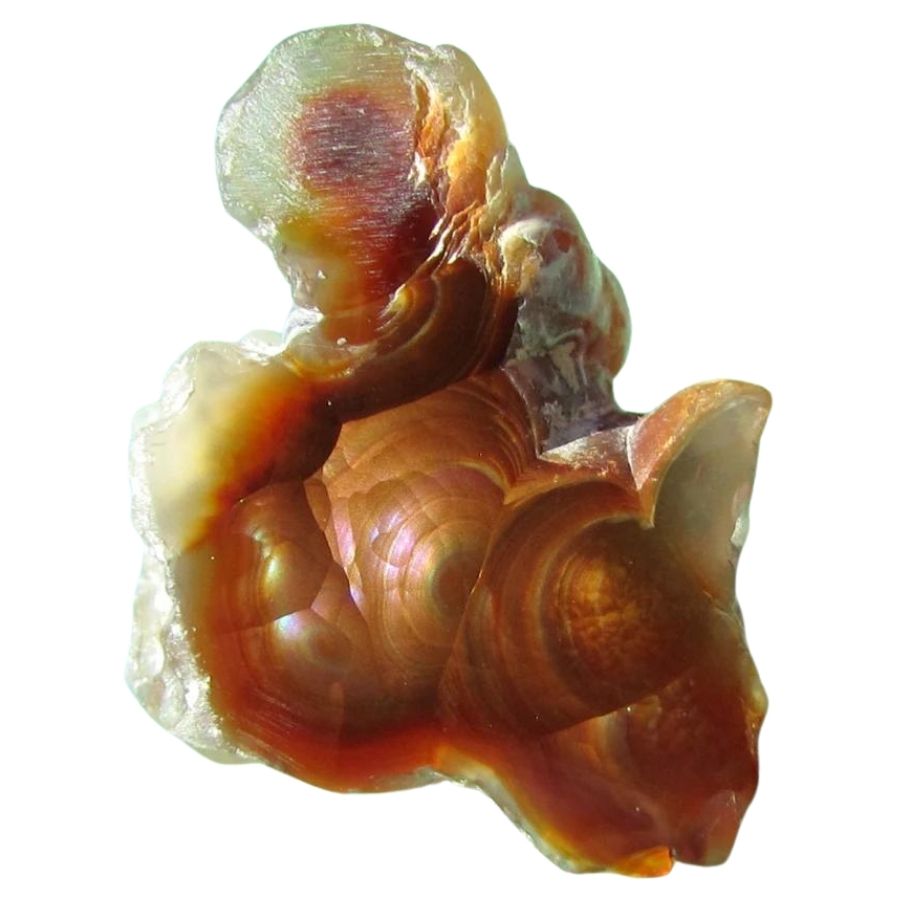
Fire agate is a type of chalcedony that has a unique play of colors, resembling flames within the stone. It forms when hot water, saturated with silica and iron oxide, fills cracks and cavities in rocks.
The colors in fire agate come from the iron oxide layers that reflect light, creating a fiery appearance. This makes each piece of fire agate distinct, with its own pattern of colors and shine.
People often use fire agate in jewelry because of its eye-catching look and the belief that it brings protection and energy. It’s also popular among collectors who appreciate the natural beauty and vibrant colors of the stones.
Where you can find fire agate in New Mexico
- Burdick-Bisbee Hills
Fire Opal
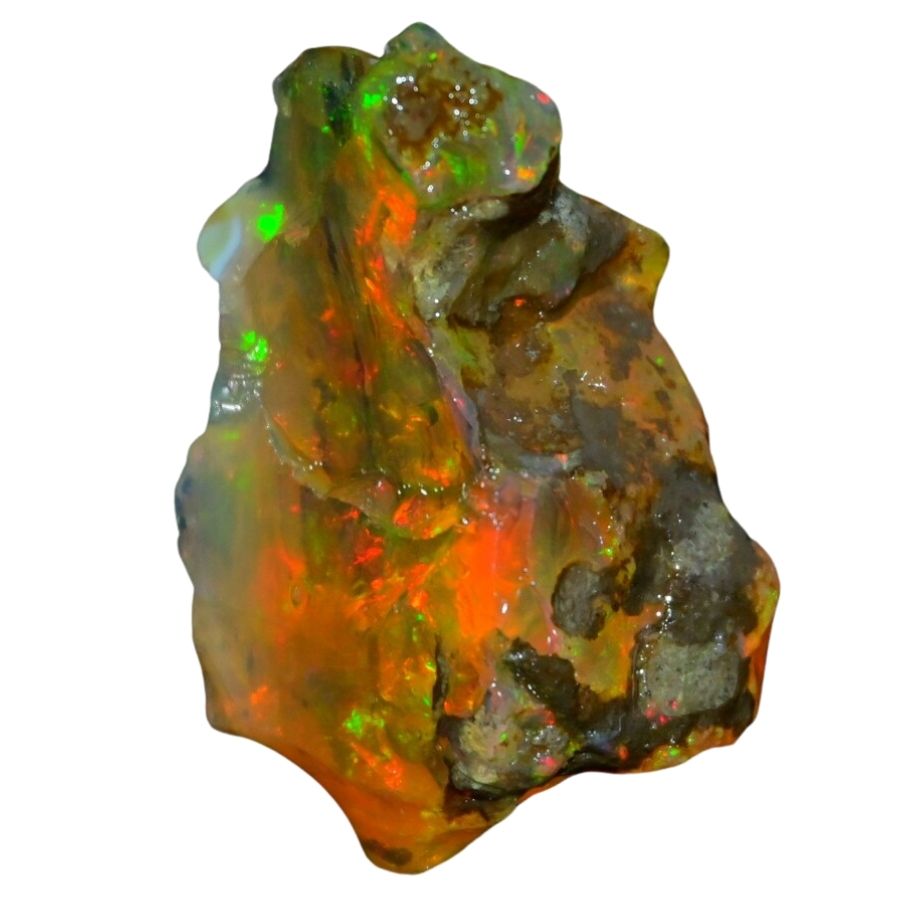
Fire opal is a vibrant type of opal that ranges in color from yellow to deep orange and sometimes red, capturing the warm glow of a sunset.
This gemstone is found in areas of volcanic activity, where silica-rich water trickles down into the cracks and cavities of rocks and solidifies over time.
The fiery colors of fire opal come from the presence of small amounts of water trapped within the silica. Unlike other opals, fire opal can be transparent to translucent, allowing light to pass through and enhance its color.
Fire opal is often used in jewelry to create stunning pieces that catch the eye with their bright, lively colors. It also stands out among the many other types of opals because of its striking color.
Where you can find fire opal in New Mexico
- Santa Rita Mining District
Red Beryl
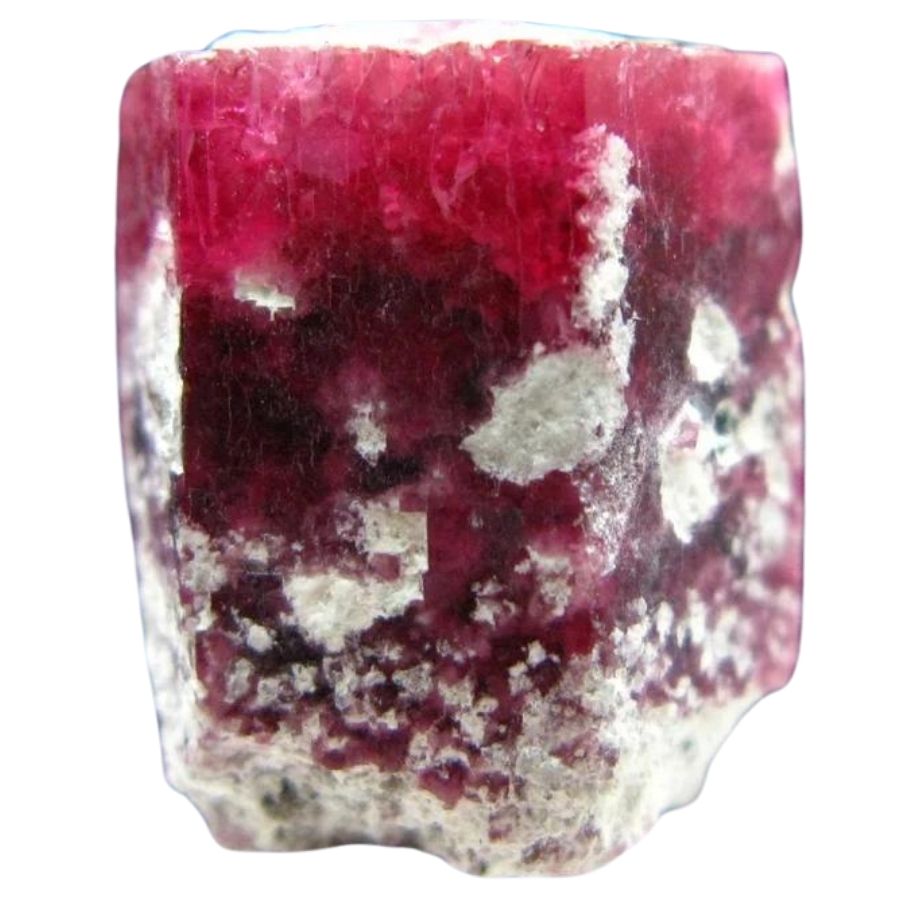
Red beryl is a rare and beautiful gemstone that shines in vibrant shades of red. It forms in specific types of volcanic rocks where beryllium-rich vapors crystallize under high temperatures and pressures.
Red beryl is perhaps the rarest gemstones found in New Mexico, making it highly sought after by collectors and jewelers alike. Its rarity comes from the specific conditions required for its formation, which are not commonly found.
This gem is used mainly in jewelry, prized for its striking color and rarity. Because it is so hard to find, a piece of red beryl jewelry can be quite valuable and special.
Where you can find red beryl in New Mexico
- Black Range
- Round Mountain
- Paramount Canyon
Spessartine
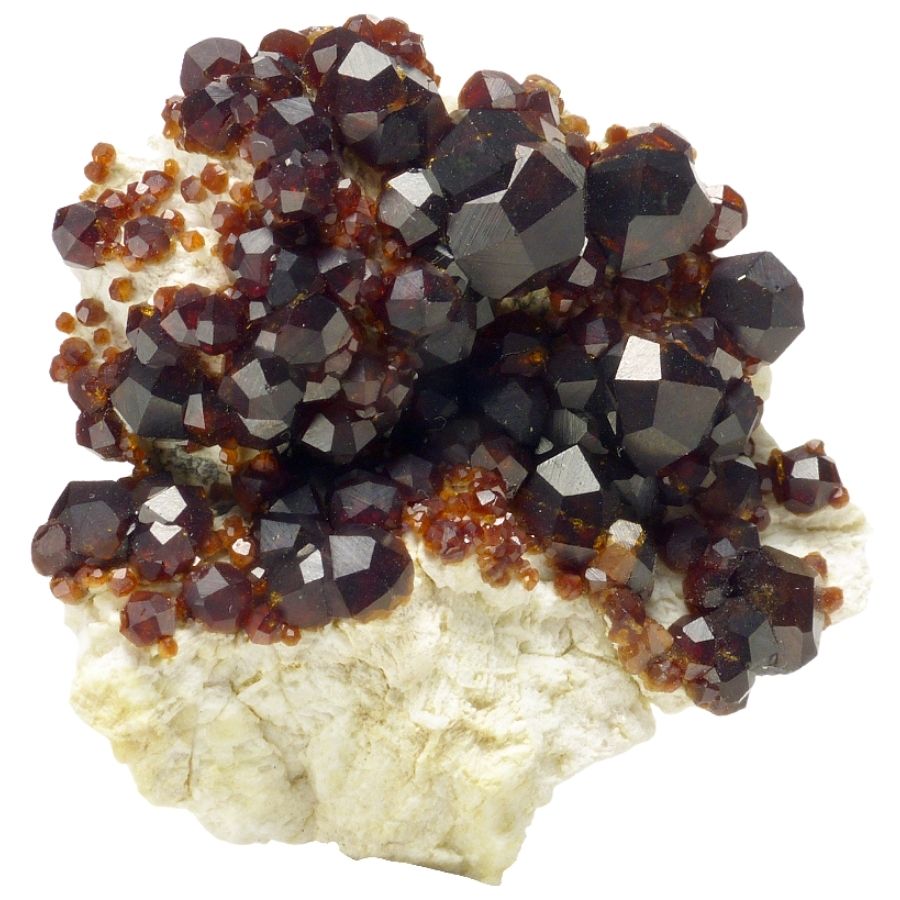
Spessartine is a type of garnet that has a striking orange to red color. It forms in metamorphic and igneous rocks when manganese is present during the rock’s formation.
This gemstone is known for its bright colors and high clarity, making it a favorite among collectors and jewelry designers. The vibrant hues of spessartine range from sunny orange to deep red, catching the eye and drawing attention.
In jewelry, spessartine is often set in rings, necklaces, and earrings to showcase its beauty.
Where you can find spessartine in New Mexico
- Grants Ridge
- Victorio Mountains
- Rio Arriba County
Topaz
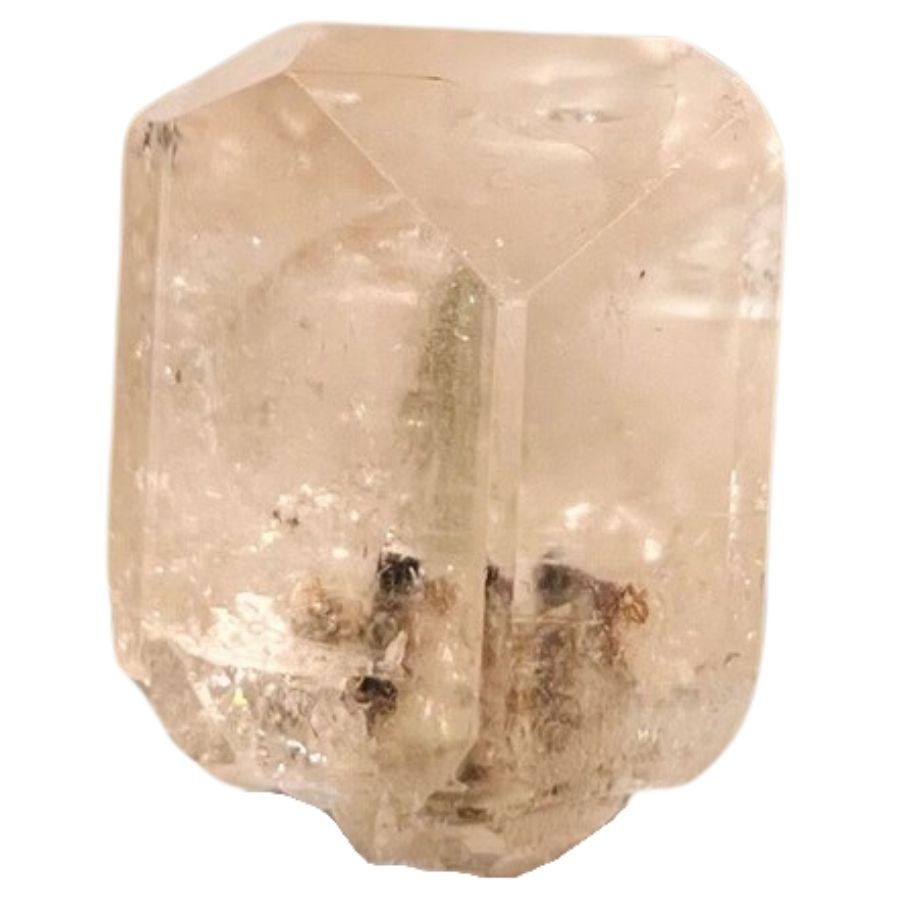
Topaz is a gemstone that can be found in a wide range of colors, from clear to deep blue, and even pink or orange. It forms in cracks and cavities of igneous rocks, where fluorine vapors interact with other elements during the cooling process.
The value of topaz greatly depends on its color and clarity, with the blue and pink varieties being especially prized. This gem is not only beautiful but also very hard, making it durable enough for all types of jewelry.
Topaz is often used in rings, necklaces, and earrings because it can withstand daily wear. It’s also believed to bring calmness and peace to those who wear it, adding to its appeal.
Where you can find topaz in New Mexico
- Catron County
- Grants Ridge
- Paramount Canyon
Tourmaline
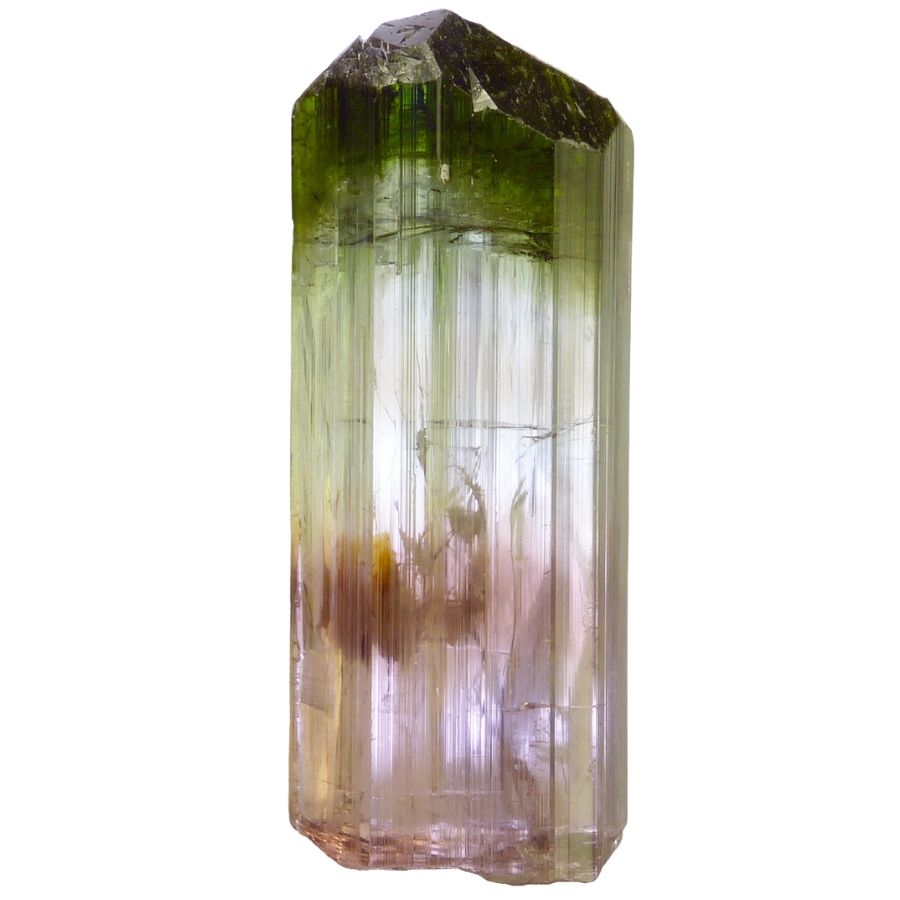
Tourmaline is a colorful gemstone that comes in almost every color of the rainbow. It develops in a variety of rock types when hot, mineral-rich water moves through cracks and cools down, leaving behind tourmaline crystals.
The special thing about tourmaline is that it can have multiple colors in one crystal, making each stone truly special. Some tourmaline crystals are clear at one end and colored at the other, or they can have bands of different colors.
Jewelers use tourmaline to create beautiful and eye-catching pieces of jewelry such as rings, necklaces, and earrings. Raw tourmaline crystals are also great additions to rock collections.
Where you can find tourmaline in New Mexico
- Zuni Mountains
- Pyramid Mountains
- Capitan Mountains
The Crystals Found in New Mexico
New Mexico is a playground for those who love to discover the sparkling world of crystals. Find out more about the best spots to explore in the guide below:
Bismuth
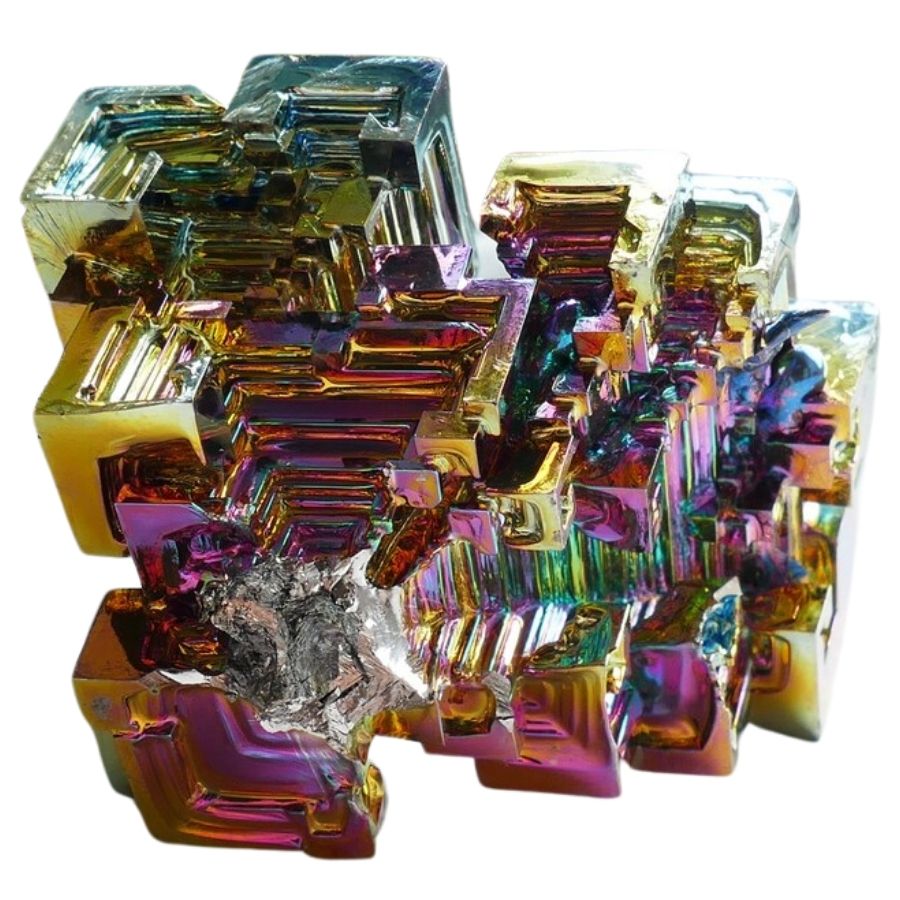
Bismuth is a metal with a colorful appearance, showing off a range of hues from pink to green when exposed to air. It’s typically found as a by-product of mining other metals like lead and copper.
Bismuth crystals are known for their stair-step structure, which happens as the metal cools and solidifies from its molten state. This creates fascinating geometric patterns that make bismuth popular for decorative pieces.
Beyond its beauty, bismuth has practical uses too, such as in medicines for stomach upsets and as a non-toxic replacement for lead in things like shot and fishing weights.
It’s also used in cosmetics and some types of fire extinguishers, showing just how versatile this mineral can be.
Where you can find bismuth in New Mexico
- Sangre de Cristo Mountains
- Peloncillo Mountains
- Picuris District
Kyanite
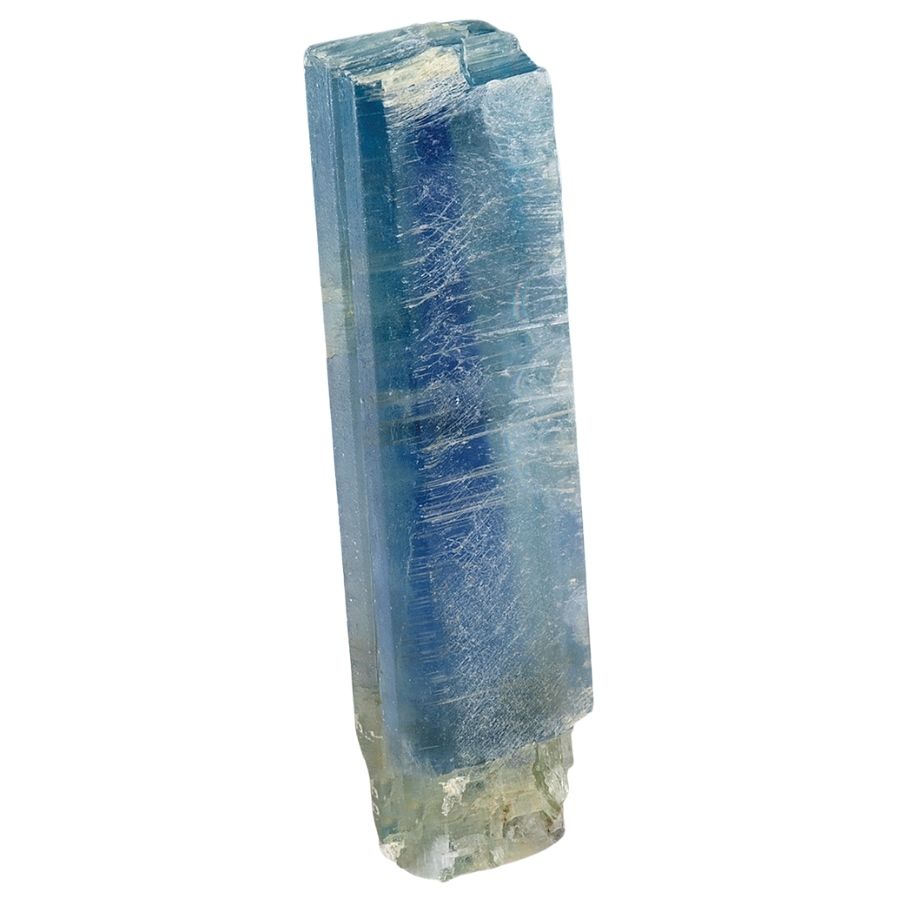
Kyanite is a mineral that’s usually blue and found in metamorphic rocks. It develops under high pressure and low temperature conditions, which are common deep in the Earth’s crust.
Kyanite is unique because it has two different hardnesses on its perpendicular axes. This means it can be easily split into thin flakes along one direction but is much harder in another.
Jewelers use kyanite to make beautiful jewelry because of its striking blue color and the way it shines. It’s also used in industrial applications, such as in the making of porcelain, which requires materials that can withstand high temperatures.
Where you can find kyanite in New Mexico
- Manzano Mountains
- Belen
- Rio Arriba County
Prehnite
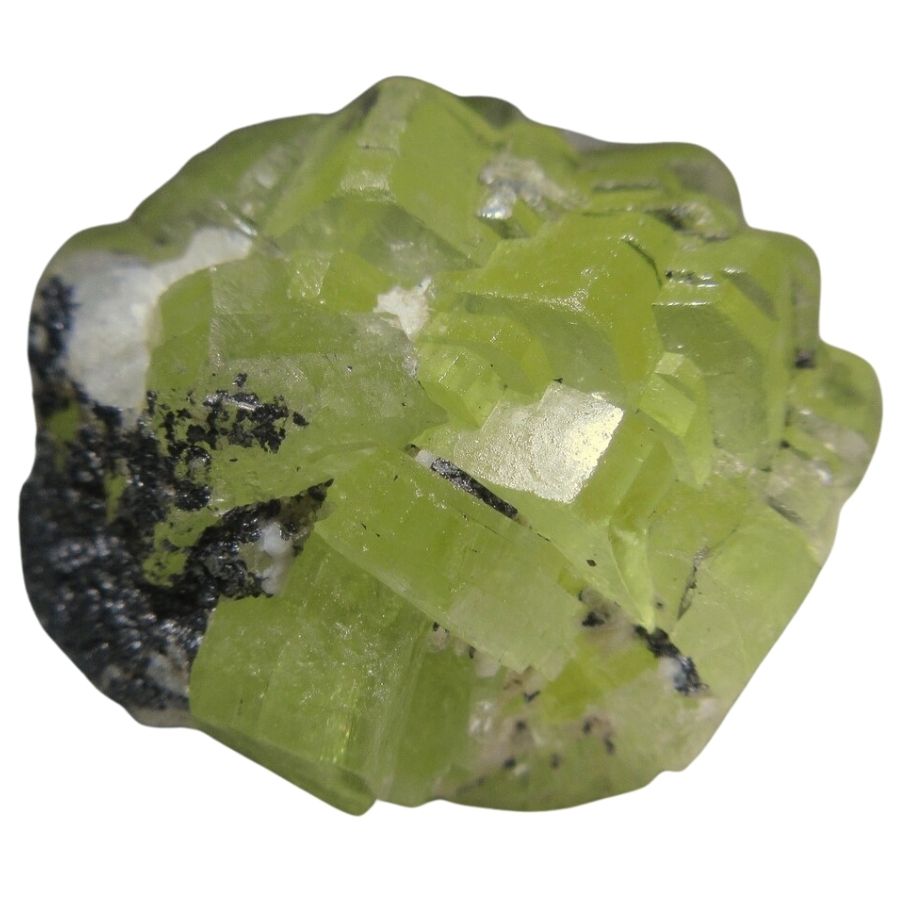
Prehnite is a green or yellow-green mineral that often forms in the cavities of volcanic rocks. It’s created when hot, mineral-rich water cools and deposits the minerals inside these spaces.
Prehnite is known for its glassy to pearlescent luster, making it attractive for both collectors and jewelry makers. Its translucent to transparent appearance allows light to pass through, giving it a soft glow.
This mineral is commonly used in making jewelry, such as necklaces and bracelets, because of its beautiful color and durability.
Where you can find prehnite in New Mexico
- Raton
- Quemado
- Luna County
Rhodochrosite
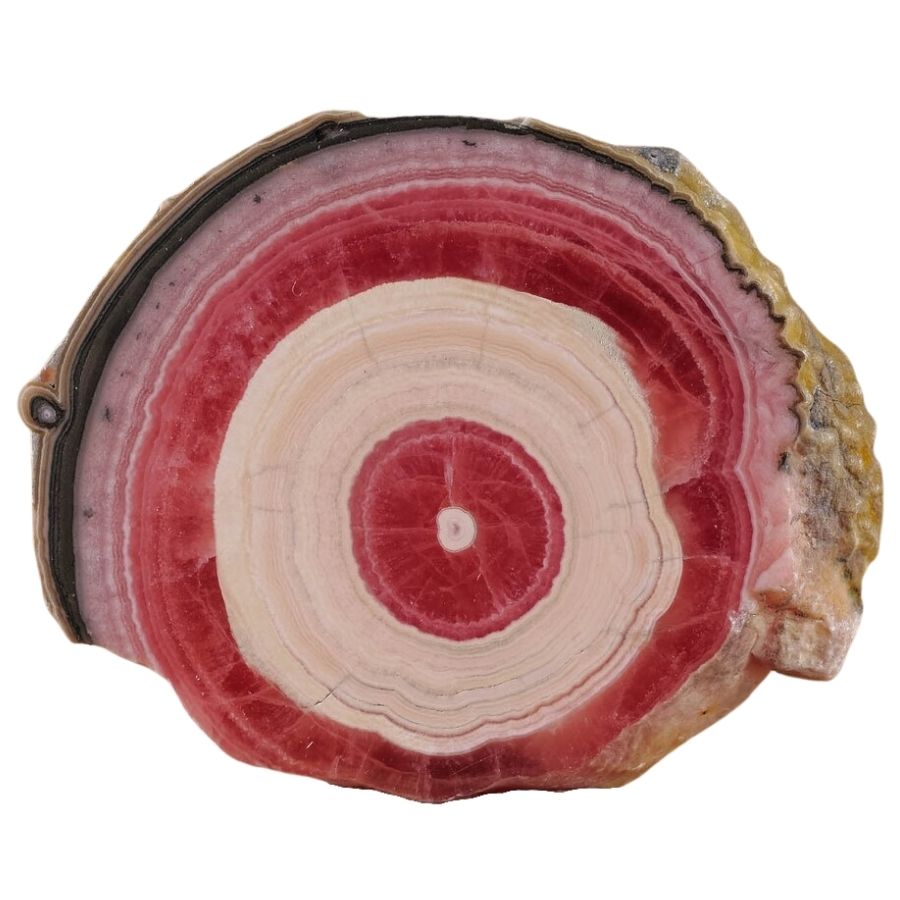
Rhodochrosite is a pink to red mineral that often forms in hydrothermal veins where hot water circulates through rocks. It’s formed when manganese is dissolved in the water, which then crystallizes into the beautiful stones we see.
The crystals found in New Mexico are some of the most striking, with bands of light pink to bright red. Rhodochrosite is known for its patterns, which can look like tree rings or waves, adding to its visual appeal.
This mineral is not just pretty to look at; it’s also used in jewelry, making everything from necklaces to earrings.
Where you can find rhodochrosite in New Mexico
- Black Range
- Questa
- Victorio Mountains
Rhodonite
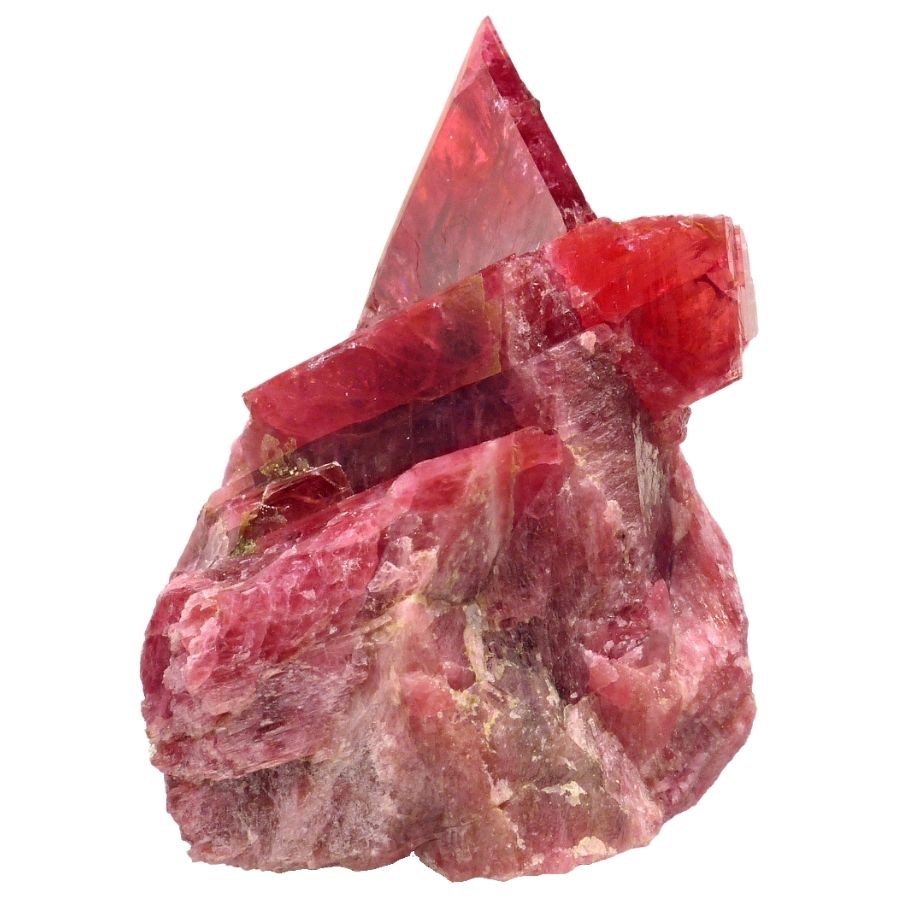
Rhodonite is a pink to red mineral that’s often spotted with black manganese oxide. It crystallizes in metamorphic rocks as a result of changes in temperature and pressure that affect the rock’s mineral composition.
Rhodonite is known for its striking appearance, with bold contrasts between its pink hues and dark inclusions. This makes it a popular choice for carving into sculptures and making into jewelry.
People use rhodonite in pendants, rings, and decorative items because of its beautiful color and patterns.
Where you can find rhodonite in New Mexico
- Grant County
- Questa
- Victorio Mountains
Smithsonite
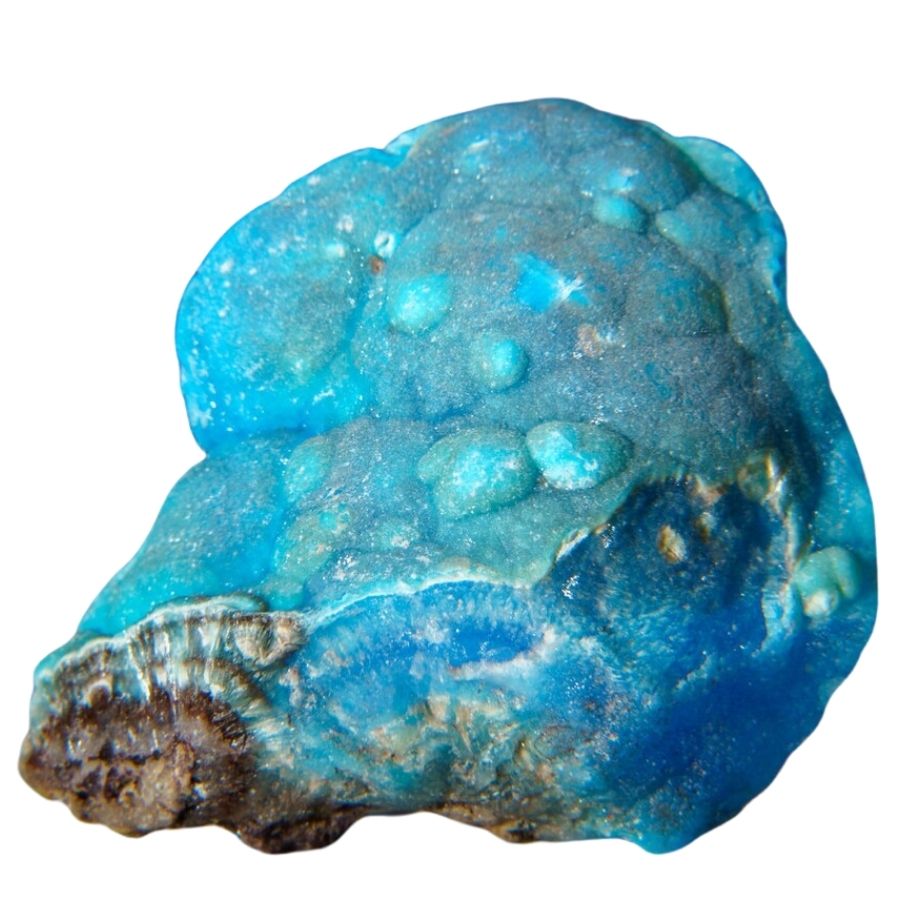
Smithsonite is a mineral that comes in a range of colors, from light blue to pink, green, and even yellow. It forms in the oxidation zones of zinc ore deposits, where zinc minerals react with oxygen in the presence of carbonated water.
Smithsonite has a smooth, rounded crystal form, which makes it stand out among other minerals. Its surface can be shiny or have a pearly luster, adding to its visual appeal.
This mineral is not only collected for its beauty but also used as a source of zinc. In addition to its industrial uses, smithsonite is sometimes cut and polished for jewelry, showcasing its diverse colors and gentle shine.
Where you can find smithsonite in New Mexico
- Socorro County
- Organ Mountains
- Peloncillo Mountains
- Pyramid Mountains
Smoky Quartz
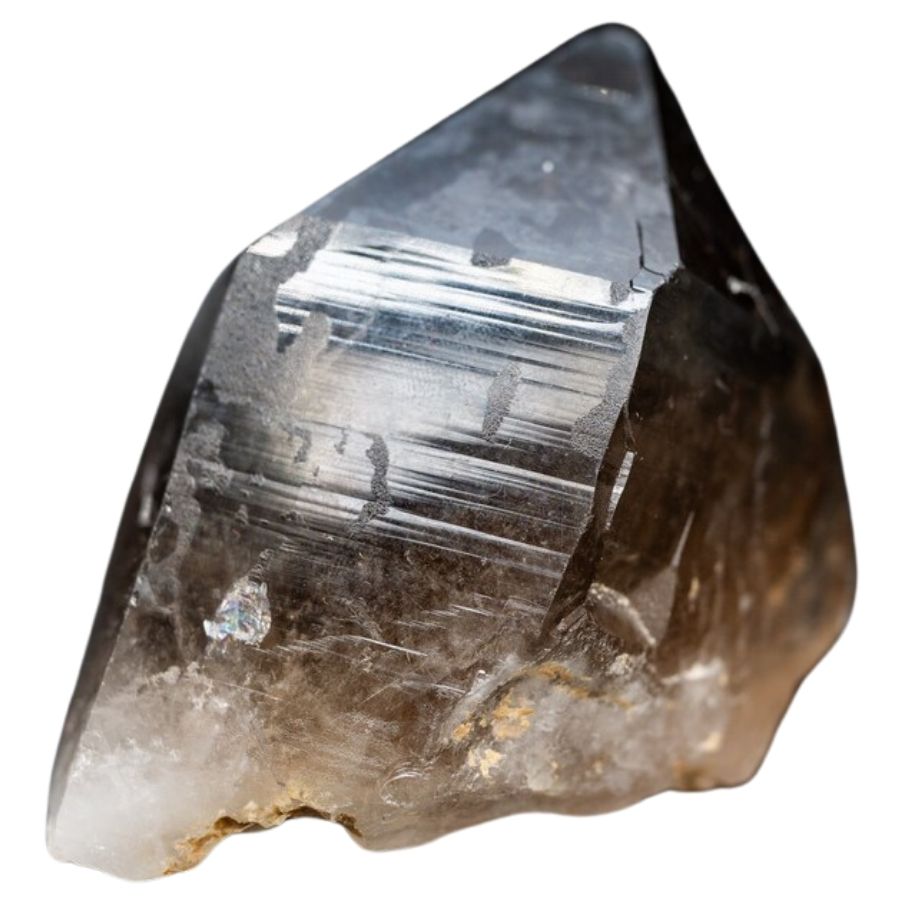
Smoky quartz is a type of quartz that gets its brown to black color from natural radiation from the earth. It develops when silicon dioxide, which is clear in its pure form, is exposed to radioactive elements that change its color.
This gemstone is known for its transparency and can range from a light smoky gray to a deep, dark brown. Its color depth depends on the amount of exposure to radiation and the presence of aluminum impurities.
People use smoky quartz in jewelry, like rings and necklaces, because it is durable and has a neutral color that matches many styles.
Where you can find smoky quartz in New Mexico
- Rabb Canyon
- Pyramid Mountains
- Bingham
The Most Valuable Rocks and Minerals in New Mexico
New Mexico is home to some of the most valuable rocks and minerals that play a big role in many industrial processes. These resources are important for a variety of reasons in a variety of industries.
Copper
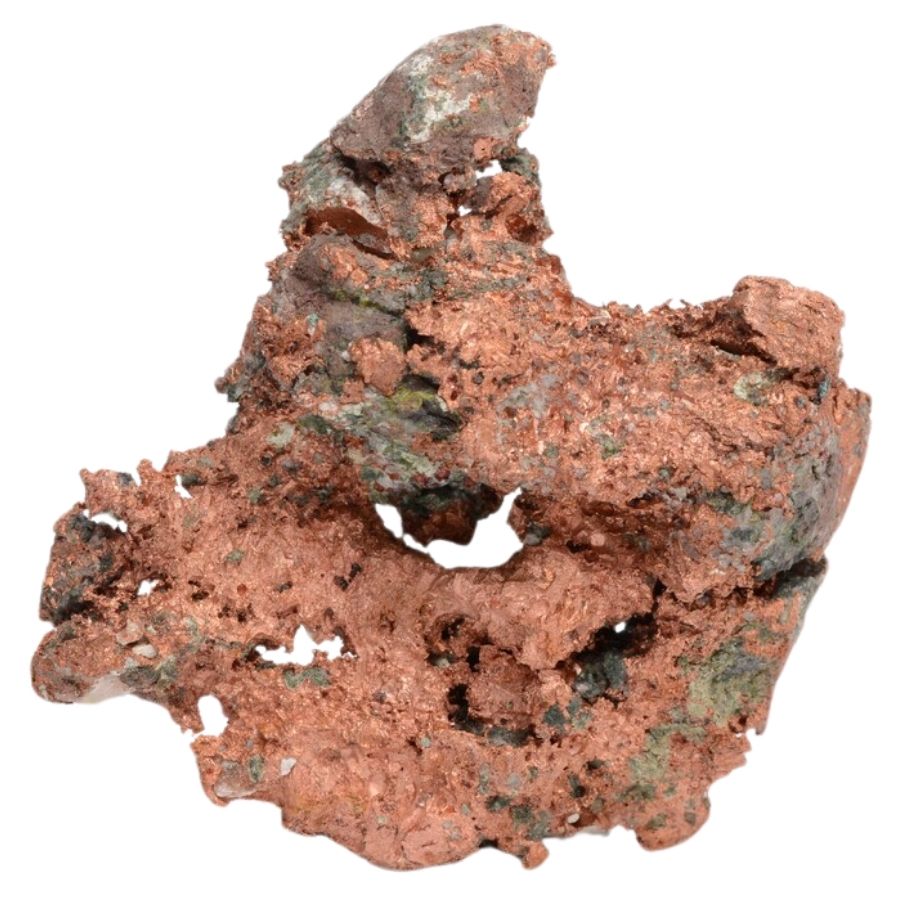
Copper is a metal with a distinct reddish-brown color that’s found naturally in rocks and the earth. It forms from volcanic processes and sedimentation, where it can be found as native copper or in mineral compounds.
This metal is known for being an excellent conductor of electricity and heat, making it very valuable in electrical wiring and cooking utensils. Copper is also very malleable, which means it can be shaped or stretched without breaking.
Because of these properties, copper is used in a wide range of products, from plumbing pipes to jewelry. It’s also important in renewable energy systems, like solar panels and wind turbines, due to its conductive qualities.
Where you can find copper in New Mexico
- Coyote Canyon
- Cimarron Range
- Peloncillo Mountains
- Pyramid Mountains
Fluorite
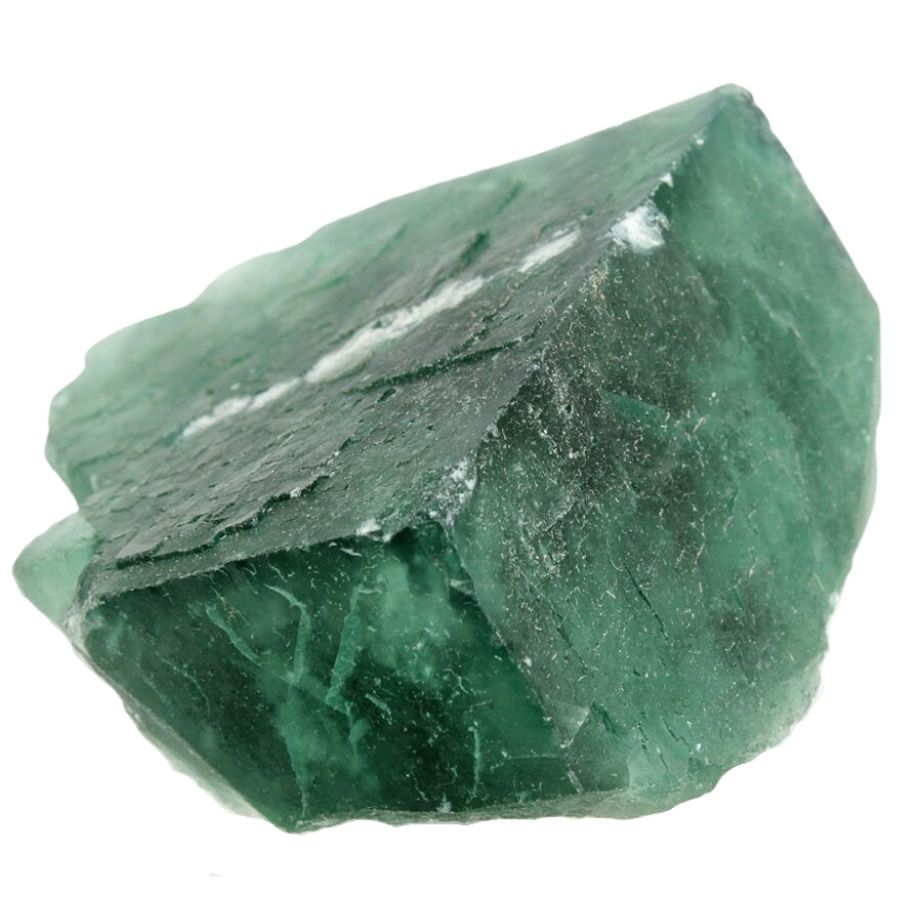
Fluorite is a colorful mineral that comes in shades of purple, green, yellow, and blue. It’s formed when mineral-rich water seeps through rocks and evaporates, leaving the minerals behind to crystallize.
This mineral is known for its ability to glow under ultraviolet light, which makes it stand out in the dark. Each piece of fluorite has a distinct pattern, meaning no two pieces are exactly alike.
People use fluorite in making jewelry and decorative items because of its beautiful colors and patterns. It is also used in the manufacturing industry for making certain types of glass and as a flux in steel production.
Where you can find fluorite in New Mexico
- Monte Largo
- Coyote Canyon
- Mogollon Mountains
- Zuni Mountains
Pyrite
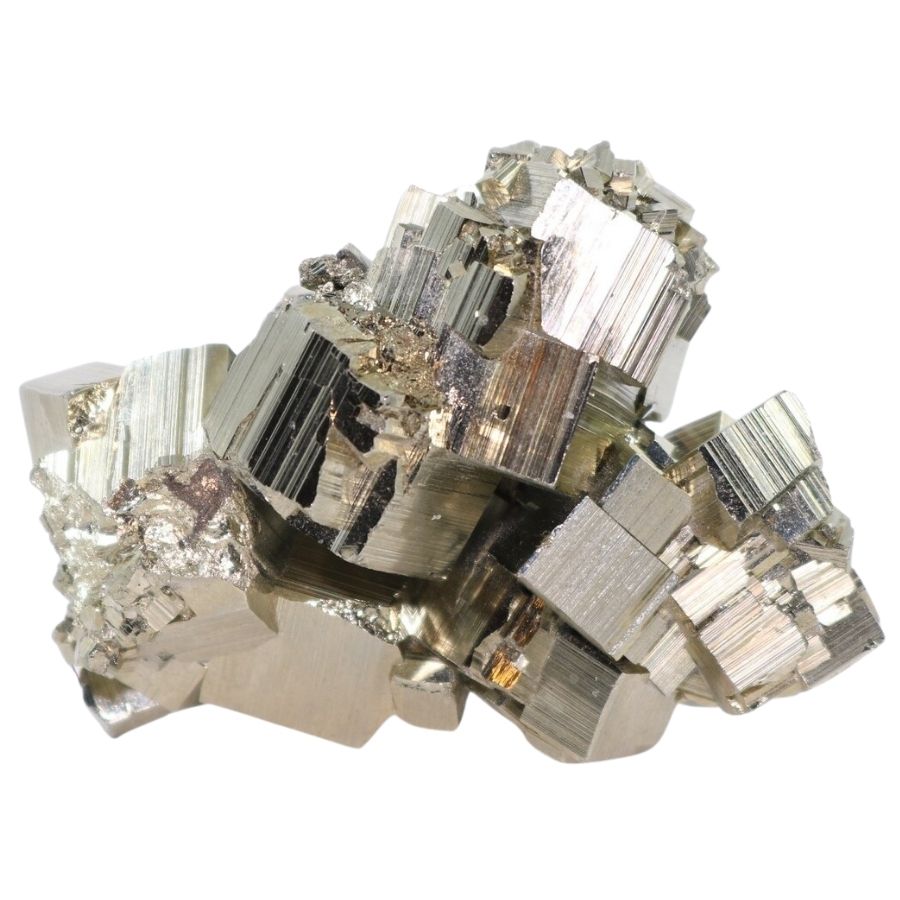
Pyrite, often called fool’s gold, is a shiny, metallic-looking mineral that catches the eye with its gold-like appearance. It forms in sedimentary rocks as crystals when iron and sulfur combine in the presence of water and oxygen.
Pyrite is known for its perfect cubic shape, which is a result of its crystal structure. It can also form in other shapes, but the cube is the most common and recognizable.
Although it’s not real gold, pyrite is used in jewelry to add a sparkle similar to gold at a much lower cost. Besides its use in jewelry, pyrite is also used in the making of sulfuric acid, an important chemical in many industrial processes.
Where you can find pyrite in New Mexico
- Mogollon Mountains
- Cimarron Range
- Sangre de Cristo Mountains
- Cibola County
Silver
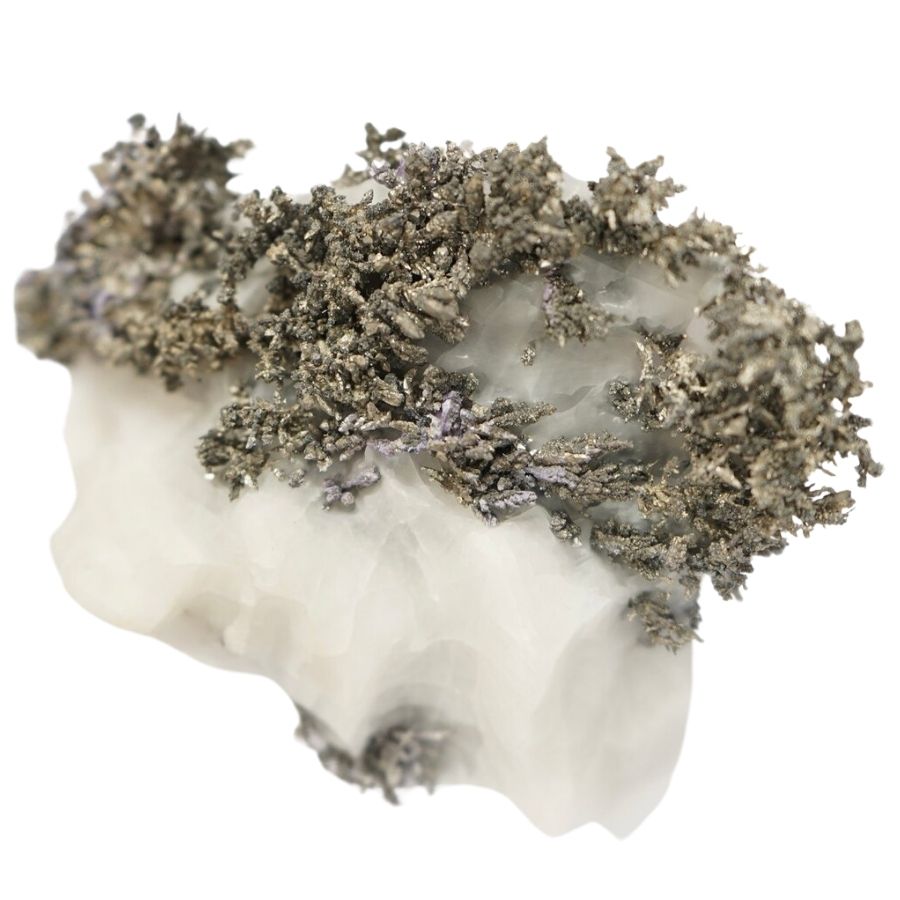
Silver is a shiny, white metal that’s both beautiful and useful. It’s created deep within the Earth, where hot fluids circulate through rocks and deposit silver along with other minerals.
Silver is one of the most conductive metals, making it invaluable in electronics for components like switches and contacts. It’s also resistant to corrosion and oxidation, which is why it’s used in solar panels and batteries.
Jewelry and coins are some of the most common items made from silver, showcasing its luster and shine.
Silver mining is an important industry, and the metal is considered one of the valuable rocks in New Mexico, where it contributes to the local economy.
Where you can find silver in New Mexico
- Zuni Mountains
- Organ Mountains
- Black Range
How to Identify The Rocks and Minerals Found in New Mexico
Learning to identify the gems, crystals, and rocks in New Mexico can turn a simple hike into an exciting treasure hunt. With the right knowledge and tools, anyone can start to uncover the secrets hidden beneath the surface of this diverse state.
Look for Luster
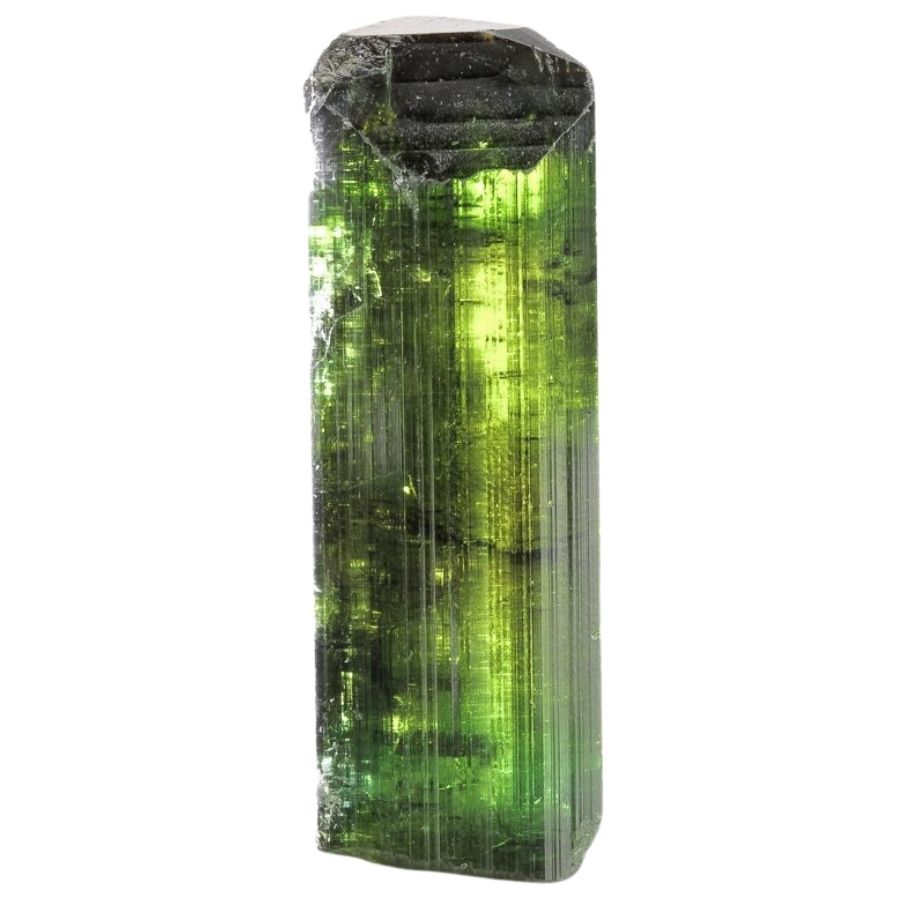
Luster is a key feature to observe when trying to identify rocks, minerals, and gems. If a rock looks shiny like metal, it has a metallic luster, which is common in minerals like pyrite and galena.
Rocks with a vitreous luster appear glassy and are often found in tourmaline and various types of gems. This glass-like shine is a good indicator that you’re looking at a mineral with a high silica content.
Some rocks have a dull luster, meaning they don’t reflect light well. This type of luster is typical for minerals that are more porous, like limestone or clay minerals.
By paying attention to luster, collectors can narrow down their options when trying to figure out what kind of rock or mineral they have found.
Observe any Fluorescence
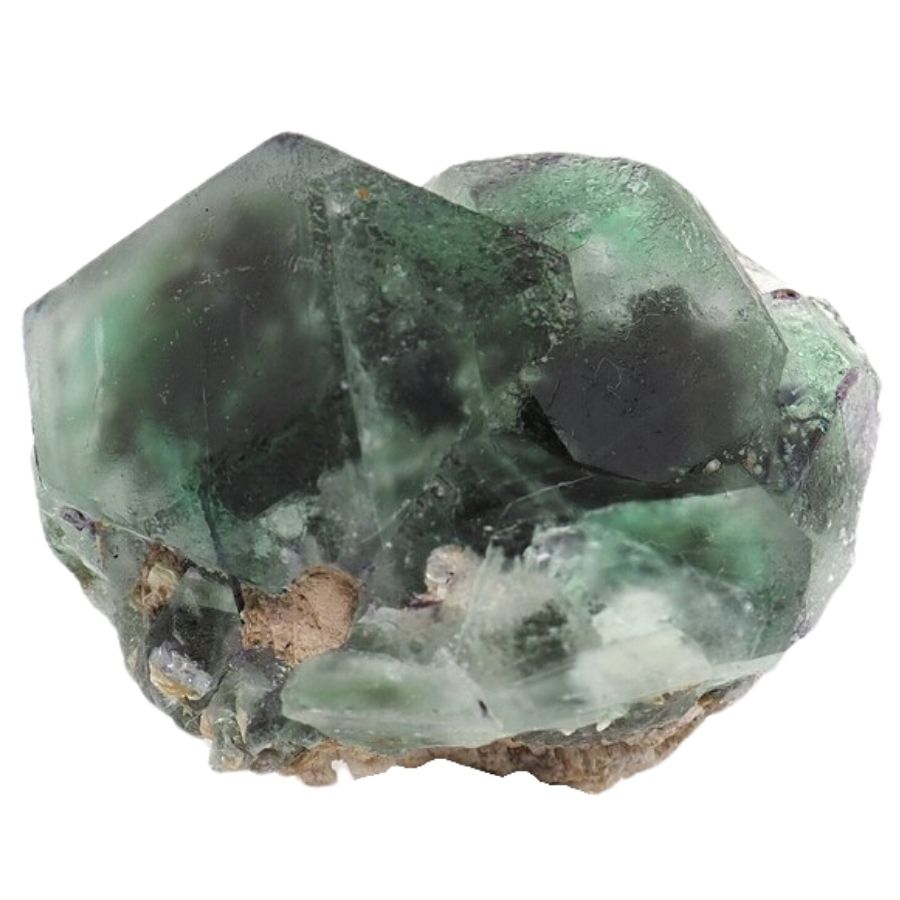
Fluorescence is when minerals light up under ultraviolet (UV) light, showing bright colors that you can’t see under regular light. This cool feature helps scientists and collectors figure out what kind of mineral they have.
For example, fluorite can glow in beautiful shades of blue, green, or purple when placed under UV light. This happens because certain elements in the mineral absorb UV light and then release it as visible light.
Not all rocks and minerals can do this, but those that can offer a special clue to their identity. By using a UV light, you can discover if a rock has this glowing property.
Assess the Rock’s Density
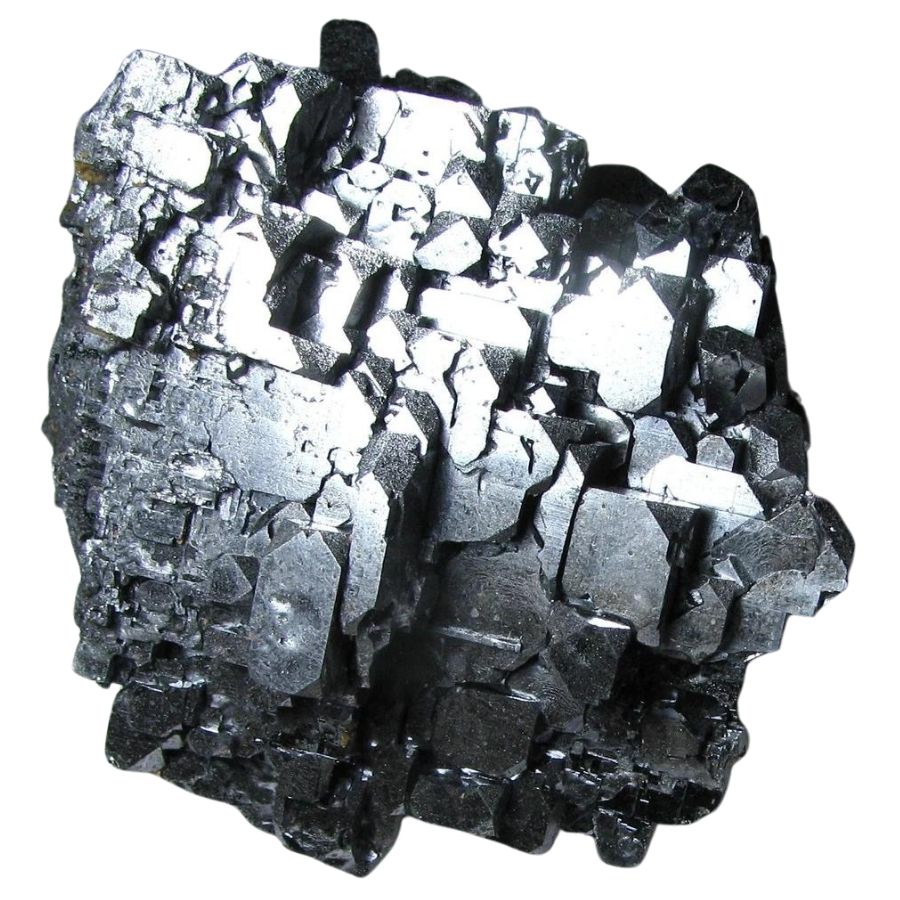
Density is a way to tell how heavy a rock is for its size. If a rock feels heavier than you expect, it might have a high density.
A piece of quartz, for example, is less dense and will feel lighter than a piece of galena of the same size. This difference is because galena contains heavier elements like lead and iron.
By comparing the weight of rocks in your hand, you can get a clue about what type of minerals they might be. Remember, dense rocks like those containing metals will feel heavier than they look.
This simple test can help you sort through your collection and make educated guesses about the type of rocks you have. Just by feeling the weight, you can start to make informed guesses about what a rock is.
Test for Hardness
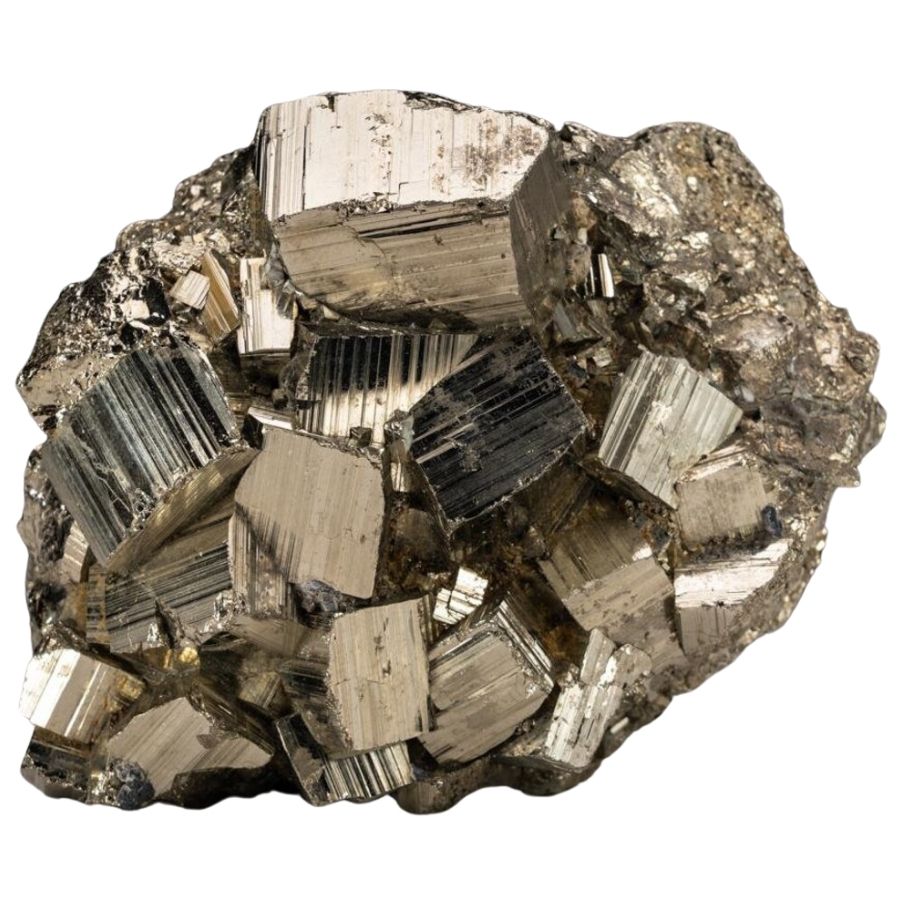
The Mohs scale of mineral hardness is a great way to figure out what kind of rock you have. By using common items like a fingernail or a penny, you can scratch the rock to see how hard it is.
For example, if a rock can scratch glass (hardness around 5.5) but not quartz (hardness 7), then the rock’s hardness is between those two numbers.
One example of this is pyrite. It has a hardness of around 6 to 6.5. So if you have a rock that can scratch glass but not quartz, then it’s possible that it might be pyrite.
This method is part of New Mexico rock identification and helps you understand what minerals are in your collection. Remember, a softer mineral will never scratch a harder one, so this is a good way to narrow down the possibilities.
Check for Cleavage and Fracture
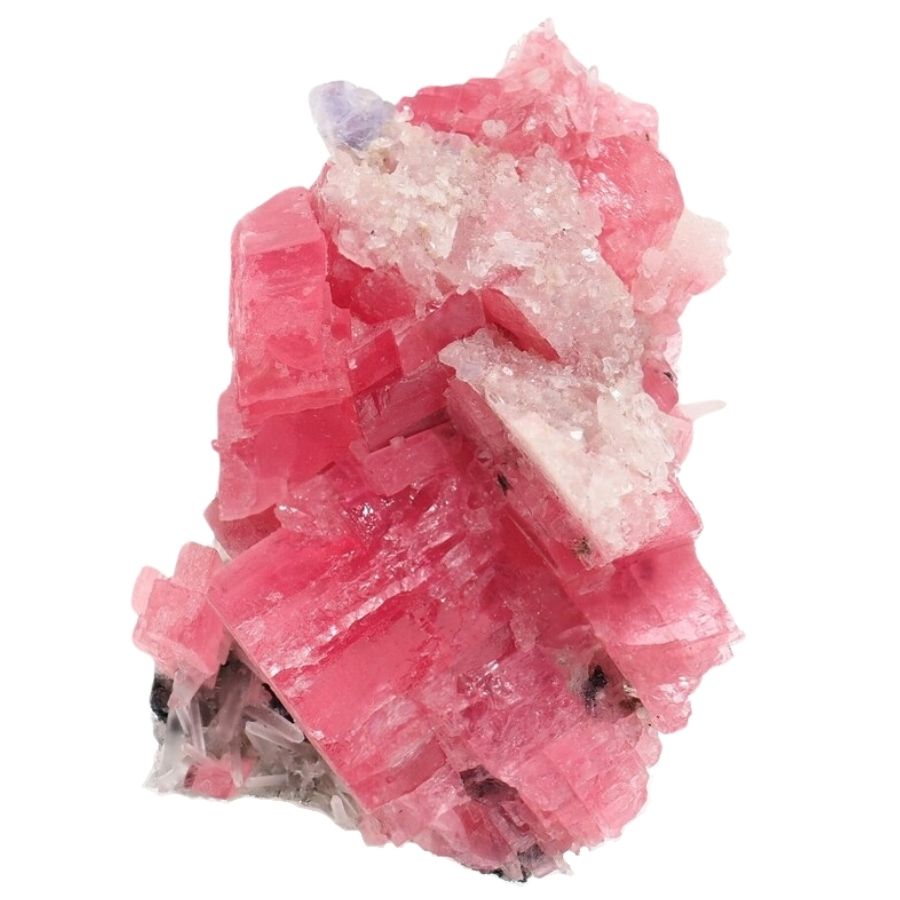
Cleavage and fracture are clues that can help identify different types of rocks and minerals. Cleavage shows up as flat, smooth surfaces where a rock has broken along its natural lines of weakness.
Rhodochrosite splits along smooth, flat surfaces in three directions. This happens because rhodochrosite’s structure has weak spots where the atoms are not held together as tightly.
On the other hand, turquoise breaks in a conchoidal fracture, which results in uneven, rough surfaces rather than smooth, flat ones. This is because turquoise’s atomic bonds are arranged in a way that doesn’t allow for clean splitting.
Knowing whether a mineral breaks with cleavage or fracture can help you figure out what it is. By looking at how a rock breaks, you can learn a lot about its properties and where it might have come from.

